By the start of the 1990s, Philadelphia had acquired a new image thanks to a number of then-recently built skyscrapers. Philly YIMBY presents exclusive massing renderings of the 1990 skyline as it stood just after the 1980s skyscraper boom in Center City, which has changed dramatically since its appearance just three years earlier (as presented in an earlier YIMBY feature).

Philadelphia skyline 1990 looking northeast. Image and models by Thomas Koloski
As the visuals show, five new towers rise above the old “gentlemen’s agreement” to not build above the 548-foot-high clock tower of City Hall, which includes the 37-foot-tall statue of William Penn atop the pinnacle. At the time, the top of tower was covered in 15 stories of scaffolding as renovations were in progress to reinforce the structure. The scaffolding was set up in 1985 and was taken down in July 1990, exposing the newly painted white top. Scaffolding was removed from the William Penn statue earlier in 1987.

Philadelphia skyline 1990 looking northwest. Image and models by Thomas Koloski
The new skyscrapers stood tall and dominated the office towers that were built before the disintegrated height limit. These towers included One Commerce Square, One Liberty Place, and Two Liberty Place, Mellon Bank Center, the Bell Atlantic Tower (now Three Logan Square), and the Independence Blue Cross Tower.
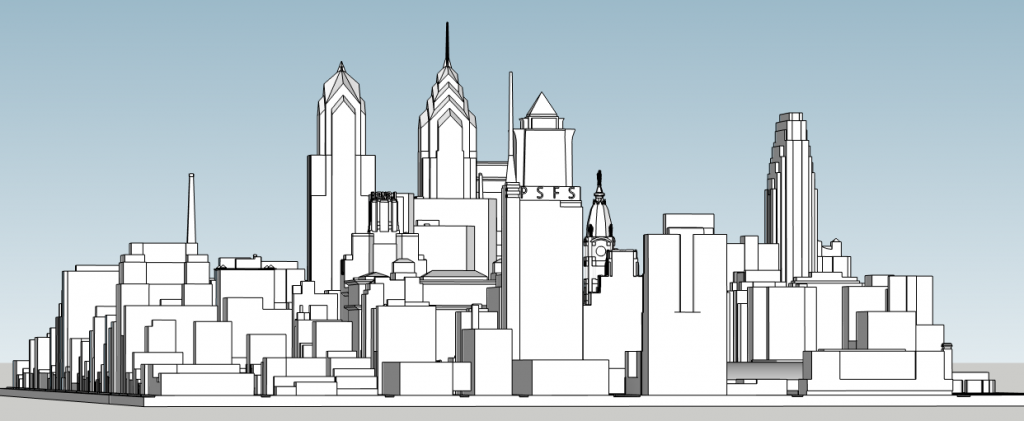
Philadelphia skyline 1990 looking west. Image and models by Thomas Koloski
All of the five towers were designed and constructed between 1984 to 1991. One Commerce Square, topped out in June 1986 at 565 feet, was the first to rise past the unofficial height limit established by the City Hall tower, though its roof height matches the pinnacle height of City Hall. One Liberty Place rose a year later and was the first tower to rise dramatically above the old height limit. At 945 feet in height, the skyscraper was the tallest of the bunch, with a symmetrically angled crown and a sharp spire, eventually opening on August 12, 1987. The Independence Blue Cross tower followed in the next year, with a concrete core and steel floors topping out at 625 feet.

Philadelphia skyline 1990 looking southwest. Image and models by Thomas Koloski
By the end of 1988, the steel structure for the Bell Atlantic Tower was seen rising from northern views such as the Philadelphia Museum of Art, eventually topping out at 734 feet in late February 1989 and opening in 1991. Two Liberty Place and Mellon Bank Center had risen simultaneously in 1989 as both topped out in fall, though Two Liberty Place had topped out first at 848 feet. Mellon Bank Center topped out in October at 824 feet when the top of the pyramid crown was attached, leaving the skin and interior to be finished for both towers.

Philadelphia skyline 1990 looking southeast. Image and models by Thomas Koloski
Before the towers had risen, all were heavily criticized as they posed a “threat” to pass the top of the William Penn Statue, with One Liberty Place taking most of the hate. But after the towers were built, many opinions had turned and some critics have called it one of the most appealing skylines at the time. To this day, there are people that still oppose the towers, but many greatly appreciate the new mass and look they give to the skyline and how they paved the way to further skyscrapers.

Philadelphia skyline 1990 with City Hall. Image and models by Thomas Koloski
Subscribe to YIMBY’s daily e-mail
Follow YIMBYgram for real-time photo updates
Like YIMBY on Facebook
Follow YIMBY’s Twitter for the latest in YIMBYnews


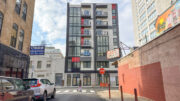
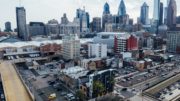
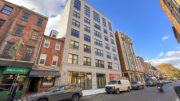
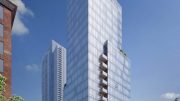
When I was at the hearing in the mid 1980’s as Willard Rouse made his proposals, I was shocked at how many people at the hearing were opposed.
Some saying that Philadelphia had a unique flavor and others who claimed that the vacancy rates in thee normal class-B towers would increase.
Going back in time, I recall when a low rise building on 8th Avenue in Midtown Manhattan was retrofitted with a gleaming tower above, while respecting the architecture of the low-rise. I witnessed the rise of the famous Hearst Tower.
It is my hope to see that type of development in Center City.
I want to add that although the height limit is gone, it is still observed to the east of Broad Street for some unknown reason.
I always felt that the skyline looked unbalanced.
As the skyline crosses the Schuylkill River, I am reminded that there is hope for a beautiful city full of low-rise, mid-rise and high-rise towers.